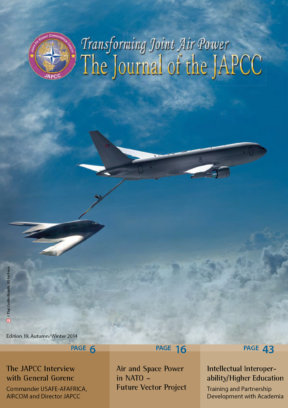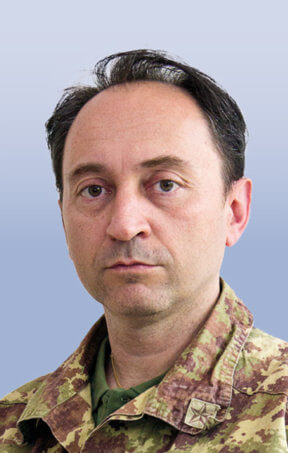Brief History of Fire Support
Since ancient times, armies have sought to attack with the greatest force possible from the furthest distance away using such weapons as bows, slings and javelins; followed by catapults and ballista, but the clashes were unquestionably decided by head-on collisions of the infantry and cavalry. Even after the appearance of the first firearms clashes were decided by bayonets rather than by gun bursts. This was true until the American Civil War (1861 – 1865), the first time in history in which musket fire and artillery were decisive for victory. The tendency towards using firepower, instead of bayonets, continued with the Franco-Prussian War (1870) and later during the Anglo-Boer wars (1880 and 1899), where the numbers of units routed by a higher volume of fire without reaching physical contact drastically multiplied. Not until the First World War, did it become universally recognized that the fire-power of artillery could bring success, where infantry could not. The combined use of barbed wire and the machine gun turned out to be the decisive defence against infantry assault, where artillery fire was crucial in a support role to make infantry assaults successful. However the air ‘domain’ remained practically unutilized as, during the First World War it was only used for reconnaissance and surveillance of the battlefield and occasionally for tactical or strategic bombing. Later, during the Second World War, air forces turned into an Air Power capability and proved themselves decisive for victory both at the tactical and strategic level, on sea and land.
During World War II, artillery became too slow for mechanized warfare, too limited in range, and too imprecise to compete with the rising Close Air Support (CAS) capability. This is why the Germans first operated the Ju-87 Stuka followed by the Allied Air Forces who did the same using the Typhoon, turning CAS into a key element of victory in the ‘manoeuvre war’.
Birth of Close Air Support
After the Second World War the US, followed by many NATO nations, maintained CAS as a key mission of Air Power. But it was not until the Vietnam War that CAS, as we know it today, became popular. Infantry units and Special Operations Forces would call fighter-bombers, taking off from distant bases or aircraft carriers, for aid even when a single soldier was in need of fire support. Soon the US Army, in order to guarantee short notice fire support, turned its attention to the new gunship helicopters. These helicopters were seen as the panacea for all ills, since they could be positioned at short distance from the front line making them available at very short notice.
With the progress of technology, the weapon systems of helicopters became more and more powerful and accurate, as demonstrated during Operation Desert Storm in 1991 (First Gulf War). At the same time aircraft weapons became more precise and were witnessed by the wider public, who were amazed as they watched the television as guided bombs slipped into the windows of the bunkers. What was intended to be more lethal against specific targets, proved itself useful to reduce the collateral damage, first in low-intensity conflicts and later in the asymmetric ones.
As if TV- and laser-guided bombs were not enough, in the following years, the introduction of GPS technology and miniaturization of circuits allowed the creation of a generation of more precise and cheaper1 smart bombs; even allowing the recycling of the old dumb ammunition, using precision re-configuration kits. Today, thanks to the accuracy of GPS systems, you can release smart munitions at higher altitudes, allowing more stand-off range from anti-aircraft weapon systems.
The Birth of Artillery Smart Grenades
In the 1980s, the US produced the first laser-guided ammunition, the M-712 Copperhead2, but very soon, the Russians took the lead in increasing the accuracy of artillery with the creation of the 30F39 Krasnopol laser-guided projectile. In 2000, the US soon re-dressed the balance by developing their own Excalibur laser-guided projectile. Both munitions were used in war, the Krasnopol in Chechnya3 and the Copperhead in the First4 and Second Gulf War. Both provided a much better performance compared to conventional artillery.
However, after the spectacular performance of the massive air intervention in the First Gulf War, artillery seemed almost destined to disappear, as towed guns were not suitable for the rapid movements of mechanized warfare and the self-propelled guns too heavy to be quickly airlifted in case of crisis response operations. Moreover, both systems were considered too aggressive and inaccurate for peacekeeping missions. If fire support was needed, there would be the inevitable use by NATO of attack helicopters or fighter-bombers.
At that time however, it was impossible to insert a navigation system into an artillery shell; GPS was still too expensive, big and complicated and many prototypes were not robust enough to withstand the acceleration inside of the gun barrel. Due to their size, only the Multiple Launch Rocket System (MLRS) munitions were suitable for improvements. But progress in miniaturization technology would soon allow even 155 mm shell to be equipped with sophisticated guidance systems.
Artillery or Close Air Support?
In recent years, a series of smart artillery munitions which are extraordinarily lethal (accuracy and impact trajectory) have been developed, attracting the attention of all branches of the Armed Forces. There are GPS- and laser-guided projectiles using different types of propelling charges; e.g. cartridge bags, metal cartridge, rocket assisted, and discarding sabot; allowing easy adaptation of new ammunition to the field guns already in inventory. This type of ammunition has the following characteristics:
Extended Range
It is taken for granted that fighter-bombers can reach targets at great distances, but in some cases the current smart artillery projectiles are able to accurately reach targets between 100 – 120 km away.
Smaller But in Great Number
Although an average artillery projectile weighs only about 30 kg, continuous artillery fire could provide the same effects on a target compared to a bomb dropped by an aircraft. Collateral damage could also potentially be reduced by using a small projectile.
High Readiness
An artillery battery is ready to fire in two minutes – the same amount of time is required to get a pilot from the ready room to his aircraft.
Persistent Fire
An additional advantage of artillery shelling is the guarantee of extended fire ‘persistence’ on the target, also UAS’s longer endurance but limited ammunition payload compared to an average artillery ammunition stockpile.
All Weather Operations
Artillery is not affected by adverse weather conditions like poor visibility or thunderstorms.
Cost Efficiency
Another factor, which is a key consideration in all of today’s military choices, is the operating cost. The cost of a fighter-bomber, its ammunition, and related pilot and FAC training, cannot compete with the cost of operating an artillery gun and the related training.
Different Scenarios
Air Supremacy or Disputed Airspace
Many criticisms have been made of the military establishment, accusing it of having changed the entire national military organization in terms of equipment, material and training, to focus solely on the ISAF mission in Afghanistan. Critics claim that many of these changes would not compete well against a medium or high technology equipped adversary. In many cases, this is a fair criticism: for example the massive use of Unmanned Aerial Systems (UAS) which are vulnerable to an air opponent or in the case of mammoth MRAP5 trucks, which are not suitable off-road because they are too heavy. However, artillery would stand up well to this criticism and it fits either in asymmetrical and symmetrical warfare.
Facing Air Supremacy
In the event of a military confrontation with a high-tech opponent, artillery will often be able to camouflage a gun or pad and launch a salvo; such as Hamas and Hezbollah did for years against Israeli defences. Despite being one of the most technological advanced military organizations, Israel suffers these kind of attacks, let alone if these dumb ammunition were converted into smart weapons. The proliferation of surface-to-surface missile systems in the arsenals of Syria and Iran is a clear sign that, even though they cannot hold a candle to the USAF or IAF6 in an air war, they will maintain a capability to strike targets with missiles and rockets. Even North Korea maintains its deterrence against South Korea with 170 mm and 240 mm artillery guns. These, in the event of war, would deliver a shower of shells on the enemy capital, Seoul, and it would not be an easy task to silence the thousands of pieces of artillery which are scattered and camouflaged throughout the countryside, even if the USAF and RoKAF7 would make short work of the North Korean People’s Army Air Force.
Enhancing Sea Power
Even power projection ‘from the sea’ provided by embarked aircraft can be supplemented by new naval artillery systems8. Naval gun smart ammunition are now a reality and in some cases (range permitting) can be a valid alternative for a sortie of fighter-bomber planes in support of landing forces. Future USS Zumwalt class destroyers have 20 four-cell Peripheral vertical Missile Launchers (PVLS) situated round the perimeter of the deck, while another missile system under consideration includes a tactical Tomahawk. It will be equipped with a fully automated weapon handling and storage system and a family of advanced munitions and propelling charges, including the GPS-guided Long Range Land Attack Projectile (LRLAP). Up to 900 rounds of LRAP ammunition will be carried.9 Future US Navy weapons systems may include a rail-gun that is able to fire a projectile at ranges of 50 to 100 nautical miles, with an eventual range up to 220 nautical miles.10
A Case-Study in Point
The air assault operation ‘Anaconda’ carried out in Afghanistan in 2002, called for a rapid deployment of US forces in order to surround the Taliban units in the region of Shahi-Kot Valley. Fire support of the 1,800 US soldiers was achieved by only a pair of 120 mm mortars and 7 Apache helicopters. When the latter were hit by Taliban AAA, they continued to fight albeit heavily damaged and with limitations, so the US Task Force very quickly ran out of both mortar and air support. The USAF and USN provided more CAS missions than planned but they faced several problems, due to the unknown position of friendly troops and Special Forces on the move during the fighting. In 2003, long-range smart artillery projectiles had not yet become massively popular. Nowadays, the required fire support for a similar operation could be provided by artillery batteries, prepositioned at great distance and employing smart ammunition. In this way, it would be possible to share the CAS burden with the same accuracy and lethality.
Conclusions
The existence of the ‘traditional’ Air Force ‘roles’ seems threatened, ‘surrounded’ as they are by not only guided artillery munitions, but also by remotely piloted aircraft oriented to replace direct support missions and Army attack helicopters.
The distance between theory and practice is such that it is unlikely that CAS will be phased out and will, as it has over the last 70 years, remain the key to victory.
But are we really sure that in times of shrinking budgets it is more acceptable to invest in piloted strike-fighters, rather than in smart artillery projectiles?
Inevitably, the military ‘solution’ is a balanced force, consisting of a mix of different capabilities, old and modern, which in this case argues for both aircraft and smart artillery weapons, but underestimating the capabilities offered by the latter would be a fatal mistake.
‘The only thing harder than getting a new idea into the military mind is to get an old one out.’
B. H. Liddell Hart












